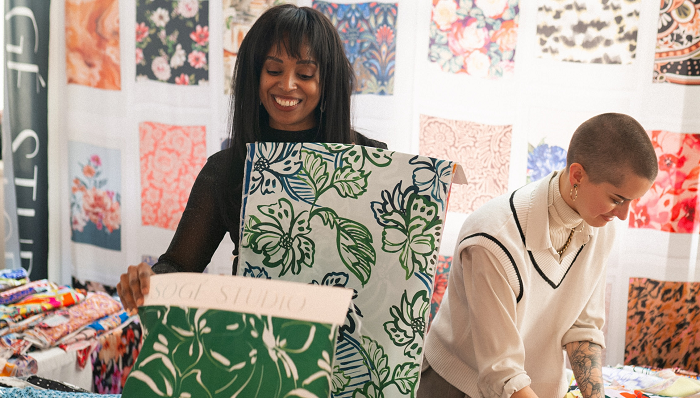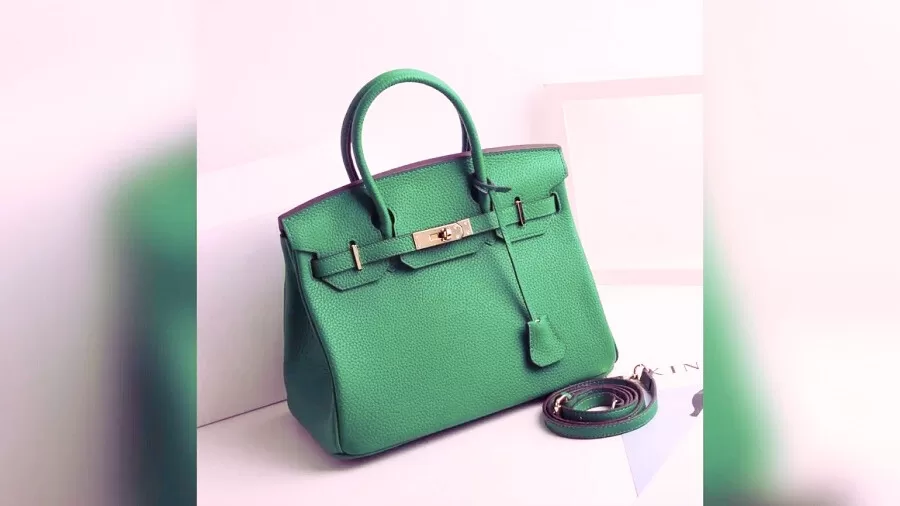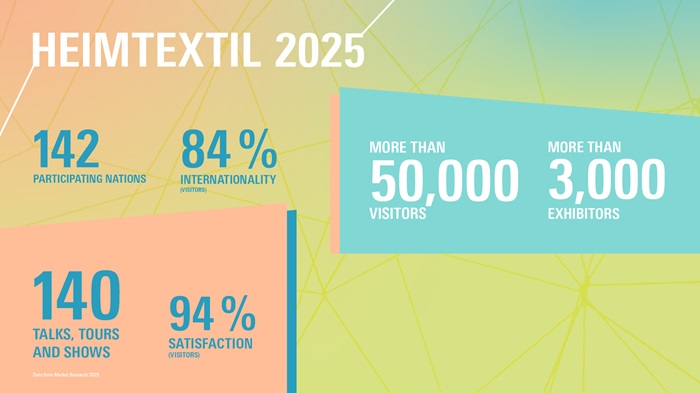FW
Textile Arabia, with 120 national and international exhibitors showcasing apparel, machinery, clothes and latest equipment and technology from Germany, Italy, France, Pakistan, the UAE, Taiwan and other countries, began on Tuesday. The exhibition, which ends on March 28, was opened by Jeddah Chamber of Commerce and Industry (JCCI) Vice Chairman Mazen Batterjee at Jeddah International Centre for Forums and Events.
The exhibition, which has the participation of businessmen and investors, and especially those interested in textiles, is organized by Al-Harithy Company for Exhibition (ACE) in cooperation with the JCCI. Batterjee points out such exhibitions contribute to the development of the Kingdom’s textile industry.
The size of ready-made clothes and textiles market in Saudi Arabia is estimated at SR10 billion. The Saudi market imports over 85,000 tons of textiles and readymade garments, 90 per cent of which is imported from Italy, France, Thailand, Taiwan and China, in addition to some Arab countries.
Textile Arabia focuses on the immense market potential as a comprehensive event representing all areas of the transport, import/export and manufacturing cycle. The dedicated textiles machinery and accessories show provides a platform for textiles and fabrics, fibers and abayas, thoubs and ghuthras, leather goods, home furnishings, textile dyes and treatments as well as machinery and related services.
Ihram for men and abayas for women form a large section of this expanding market due to the increasing number of Haj and Umrah pilgrims. Tents and towels are also in great demand.
www.acexpos.com
With manufacturing costs continuously increasing in China and across Asia, many nations are exploring new apparel sourcing destination. Many companies are diverting their sourcing needs to newer countries and African continent is emerging as the answer to their quest. Speaking during the AAFA webinar, Marie D'Avignon, Manager of Government Relations for the American Apparel & Footwear Association (AAFA) said that there are three main reasons why Africa is becoming a great option for sourcing.
Firms, want to create jobs in countries that need them, and ensure their factories are in countries where workers are well-treated. AGOA (the African Growth and Opportunity Act originally passed in 2000 and set to expire in September 2015, aimed to provide economic opportunities to countries showing a commitment to good governance and democratic principles. Africa’s growing population is also said to proving as a major pull factor for investors.
In addition to the opportunities, however, there are also challenges like communication barriers, poor infrastructure, slow border processes and many countries within Africa not having a fast-paced business culture. The AAFA says there is a lot of input from local government to address the issues, expand their markets and attract investment.
AAFA is seeking interest in Africa from the US, with a lot of investment currently coming from Asia. Among the 54 countries, countries that appear to be benefiting from investor interest most, at the present time, include Swaziland, Kenya, Ghana, South Africa and Ethiopia.
www.wewear.org
Indian textiles exports may be negatively affected if the Chinese currency continues its downward swing. The Yuan has fallen 4.9 per cent against the rupee to date and may fall further if the Chinese slowdown deepens further. The rupee depreciated by 44 per cent against the Yuan from 2009-2013, but the trend seems to have reversed in the current year with the rupee gaining 5 per cent year to date. Though Yuan's depreciation till date is too marginal to make a lasting impact, if its depreciation continues then the things could reverse.
Since China is one of the largest commodity manufacturers, slow domestic growth and a weaker Yuan will help them increase exports, which would impact most of the Indian commodity companies. Textiles and engineering goods exports would be affected deeply. At present, 10 per cent of yarn produce of India goes to China. If the depreciation in the Chinese currency continues for six more months, India's cotton and yarn manufacturing companies would record a 3per cent-5per cent price decline.
Consistent demand for cotton and yarn from China had increased the revenue of most textile companies by 35 per cent- 40 per cent. Due to the expensive quota system in China and the Chinese government's cotton stock piling policy of supporting its farmers by buying cotton at high prices and selling them to farmers, most Chinese companies preferred buying cotton and yarn from India and Pakistan. But, the Yuan depreciation would now lead to Chinese companies buy raw materials from China itself, instead of souring from other countries.
The European Union (EU) is planning to remove import duties on clothing imports from Ukraine. After the Ukraine government signed a political agreement cementing closer links with the EU on March 21, the European Commission has released details of proposals to remove tariffs on goods traded between the EU and Ukraine.
As per the new proposal, EU duties on Ukraine exports will be scrapped first in a planned manner, once agreement obtains green signal from both the European Parliament and the EU Council of Ministers. Ukraine clothing manufacturers currently pay a 12 per cent duty on most ready-to-wear products from woven fabrics exported to the EU, with 10.5 per cent charged on babywear, 6.5 per cent on bras, 8 per cent on shawls and scarves and 6.5 per cent on ties. The EU also levies 12 per cent tariffs on most knitwear made in Ukraine, with 8.9 per cent on gloves and 8 per cent on knitted shawls.
The remainder of the planned EU-Ukraine association agreement is likely to be signed and approved following Ukraine presidential elections in May.
Early this week, cotton futures plummeted after China announced plans to cut the selling price of reserve bales, renewing worries about import demand in the world's top consumer and prompting waves of long liquidation. The most-active May cotton contract on ICE Futures US closed down 2.68 cents, or 2.9 per cent, at 90.63 cents a lb after dropping to an over two-week low of 89.84 cents a lb. Global equity markets also suffered a fall over concerns of the Ukraine crisis and slowing growth in China.
Beijing plans to cut the sale price of cotton in its strategic reserves, bringing it more in line with world prices to speed up lackluster auctions and reduce the country's ballooning inventories. China's stocks have swelled to nearly 60 per cent of world stocks projected to hit a record 97 million bales by the end of July. Fiber withstood pressure from the news early in the session before reversing and falling almost 4 per cent as worries built over the demand impact of lower domestic prices and larger policy changes as China prepares to scrap its controversial stockpiling program.
Beijing launched its stockpiling program in 2011, paying above global prices to support farmers, driving voracious demand for imports, and pegging a floor under the world market even as global output outstrips demand. Prices also faced technical pressure after inching to a session high of 93.75 cents a lb, matching but not breaching a seven-month high hit earlier this month. Technical support came in along key moving averages, and the front month settled just above its 20-day moving average of 90.18 cents a lb.
www.theice.com
The Ethiopian Textile Industry Development Institute has announced that the export performance of the textile sector has increased after amassing $75.28 million in the first eight months of the fiscal from international markets. Export performance went up by $9.9 million or 15.1 per cent higher than the same period in the previous year.
The country received majority of export orders from markets like the Europe, US, Asia and Africa. Among several local and foreign-owned companies engaged in the production of textile, the Turkish textile giant, Ayka Addis bagged the major share and has already earned $75.28 million of exported products.
The export components of textile products that were sent to the international markets consist of untailored garments, spine and woven, tailored garments and woven products. Another Turkish giant textile manufacturer, Akber has undertaken the development of biggest textile plant with a total initial capital of $175 million in the Ejere town of the North Shoa Zone, Oromia Regional State. The new factory is expected generate 9,000 to 10,000 jobs, which is larger than any operating textile factory in the nation.
www.tidi.gov.et
Jute spinners have observed that the sector's excess capacity is causing a reduction in export earnings. Experts point out that because of about 0.1 million tonnes of carryover, spinners are being forced to reduce the price products which is giving bargaining power to importers.
According to data, in the financial year 2012-13, spinners exported 0.516 million tonnes of products worth Tk 34.96 billion, which was 0.458 million tonnes worth Tk 33.67 billion in FY'12. Every ton of jute yarn was sold at Tk0.073 million in FY'12 which reduced to Tk 0.0677 million in FY'13. Bangladesh is the key source for jute yarn in the world, supplying 90 per cent of the global requirement of nearly 0.6 million tonnes, according to the Department of Jute (DoJ).
Carpet and other handicraft industries in Iran, Turkey, Egypt, Sudan (both North and South), Syria, India and China are the main destinations for Bangladeshi jute yarn. The number of jute spinning mills has increased to 96 recently from 80 mills five years back.
According to the state-run Department of Jute (DoJ), the country now has 96 jute spinning mills, where 80,000 workers produce 0.75 million tonnes of yarn annually. The sector exported nearly 0.52 million tonnes of yarn and fetched around 650 million dollars in FY '13, which was 67 per cent of the total earnings from the jute sector.
www.motj.gov.bd

Thailand's textiles, apparel and fashion industry is making a mark globally, more so in the Asian region. It has a good supply chain and strong trade with ASEAN countries. Sukij Kongpiyacharn, Chairman, Asia Fashion Federation Thailand (AFF) Committee speaks to FashionatingWorld about the fashion business in Thailand and its acceptance in the domestic, global market
Give an insight on Thailand’s textiles, garment and fashion industry.
In textiles and apparels, AFF Thailand has a good supply chain. We are one of the strongest textiles in ASEAN and 70 to 80 per cent of the material that we use is local. We do not import much and this is what makes the Thai apparel industry competitive, as we have the speed to the market. When a buyer is looking for verticalisation and regionalization, we have the material locally. Each year we do apparel exports worth $3 billion and the domestic consumption is estimated at $3 billion for the whole apparel industry, this excludes textiles which is about $6 billion. Our combined exports of garment and textile last year was around $7 billion.
What are Thailand’s strengths in the textile value chain?
A strong supply chain is our greatest strength. And the only weakness is lack of cotton fields in the country. Almost 100 per cent of the cotton consumed is imported from US, China, India and other countries. We have a strong supply of polyester, as we have a big oil refinery which is another major strength.
What is the fashion business in Thailand like?
Our estimate is that domestic the consumption is about $3,000. Exact statistics is not available. Exports are clear because there are government regulations in place and we check with members who are into domestic, we count the number and estimate the volume of business. We know it is growing because department stores are expanding at a rapid scale.
Of the international brands available in Thailand, are they producing most of the products locally or are they being imported?
It is a combination they are produced here as well as imported because a lot of commercial brands are not actually produced in Europe or the US these are being produced in Asia. And for brands in China, even though they have brands of US, it is being produced in China and brought to Thailand. Mostly the products sold in Thailand are produced within Asia.
What is the acceptance of Thai designers within the country?
The domestic market can be classified into many groups. Modern trade or discount stores, department stores, and designer boutiques and smaller shops, it is difficult to characterize. We have a wide variety of retail outlets and each and of them has their own uniqueness in design.
As a part of AFF (Asian Fashion Federation), what is Thailand’s contribution in the whole chain?
AFF was created with a belief that Asian fashion would influence global market. But a single country it is too small to make an impact, so AFF came into existence with China, Korea and Japan, later Singapore was added and Thailand and Vietnam became the fifth and sixth to join in. They are hoping to try and share knowledge to support the business. AFF was formed with the belief that together it could take fashion from Asia to the world and it will be able to enhance the trade in fashion.
What impact is the coming together of six countries creating?
It is getting clearer now that we should support young designers and need to explain more to our members about free flow of goods between ASEAN members as we have FTA. Due to some technical issues members are not aware about how to do multiple country shipment like when Japan is shipping goods from China to Bangkok and if the product is not right from Thailand and they want to move to Singapore or Vietnam they can ship it without paying the import duty if the documentation is right. These are the things that help to reduce the burden of AFF members who do business in ASEAN. As an AFF member, each year one member country has to host a conference and pitch for business. We invite every country as an exhibitor or visitor it’s more of a match making exercise. That is our main focus every year.
What is Thailand’s business relation with China?
We import a lot of material from China. Many here are afraid of China as their products are cheap and competing is tough. But sooner or later Chinese business will not matter to us and Thailand will benefit from exporting to China.
What about Indo-Thai business relations?
Although India is the 2nd largest textile producer it consumes a lot of what is produced domestically. Moreover, logistics is another matter as shipment from China to Bangkok takes about a fortnight. The trade in textiles and apparels are more towards Thailand, Taiwan and China as all the business has shifted on the eastern side. Business with India is possible but price, quality and delivery matters. Interestingly, most successful clothing and textile traders in Thailand are Indians. We don’t know many Indian exporters and don’t have experience with Indian manufacturers. Among the Chinese, the first to import from China are the overseas Chinese. The Indian community in Thailand should be the first to do big business with India.
Siddiqsons from Pakistan that offers a wide collection of denims showcasing its strong skills in laser technology and up-to-date processing and dyeing techniques has ranked fifth, among the top five denim manufacturers and retailers in Asia by WGSN, the world’s trend forecaster and provides comprehensive seasonal coverage and item-specific design recommendations from all significant fashion week shows. Recently in its report, WGSN reported about top five denim manufacturers and retailers in Asia.
First on its list is Advance Denim, a one-stop company for on-trend and fancy fabrics, presenting a wide range of different kinds of fabrics such as double-coloured selvage with laser mended-look denim. These are high on the fashion radar this season. Base Wealth follows on the second position. The company presents a wide range of special fabrics focusing on women’s fashion denim with soft Tencel mixed with power-stretch lightweight fabrics for summer. Multiple coloured and printed fabrics in stretch are offered as well as innovative jacquards.
Focusing on indigo primarily for Spring/Summer 2015, third ranker, Black Peony’s collection consists of soft-handle power-stretch fabrics for women, as well as a comfort stretch for men. It also shows indigo yarn-dyes, jacquards and Tencel in top and bottom weights.
www.wgsn.com
Indian yarn exports to China have slowed down because China has begun offering a lower price for Indian yarn on ground that rupee has strengthened against the dollar. Chinese price for Indian yarn has declined by 6 per cent to 7per cent over the past one month and is now quoting at 3.30 dollars per kg.
Also China is expected to announce its cotton pricing policy in the first week of April, due to which importers are taking a wait and watch approach before they place fresh yarn orders from India. With country’s famous cotton stock piling policy, it has also built a good stock of yarn, so they are expected to utilize the available stock before place new buying orders.
Of late, China has been importing cotton yarn from India to make towels, T-shirts, jeans and stockings. The country is now focusing on high-value products instead of spinning yarn, which has opened up a huge window of opportunity for Indian suppliers of the raw material. India has produced 5,210 million kg spun yarn in 2013. Of this, 3,847 million kg is cotton yarn. In the same period, the country has exported 1,366 million kg yarn, which is 42per cent higher than that of 2012. However, though Chinese demand for Indian yarn has slowed down, there has been good offtake from Pakistan and Vietnam.











